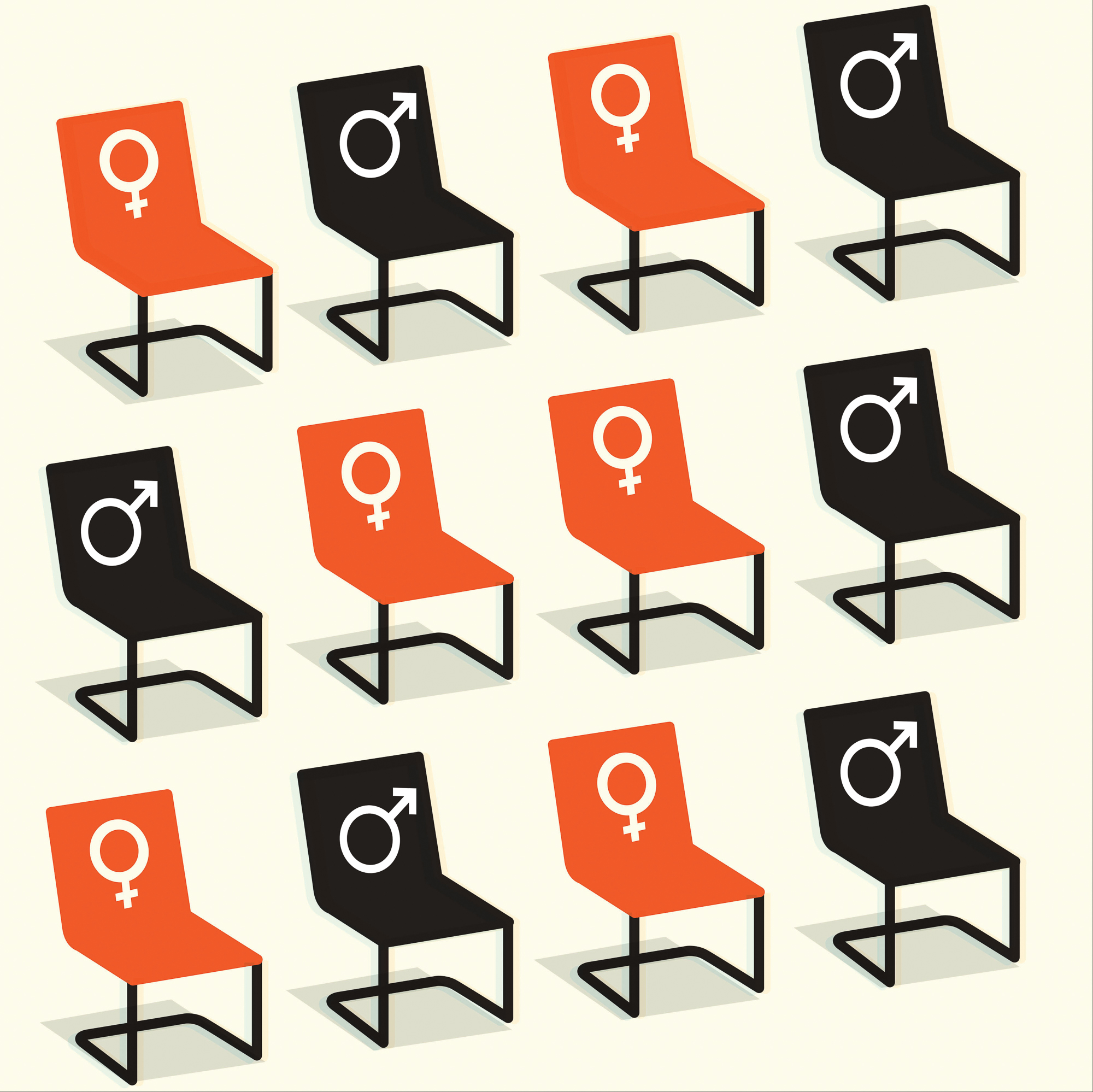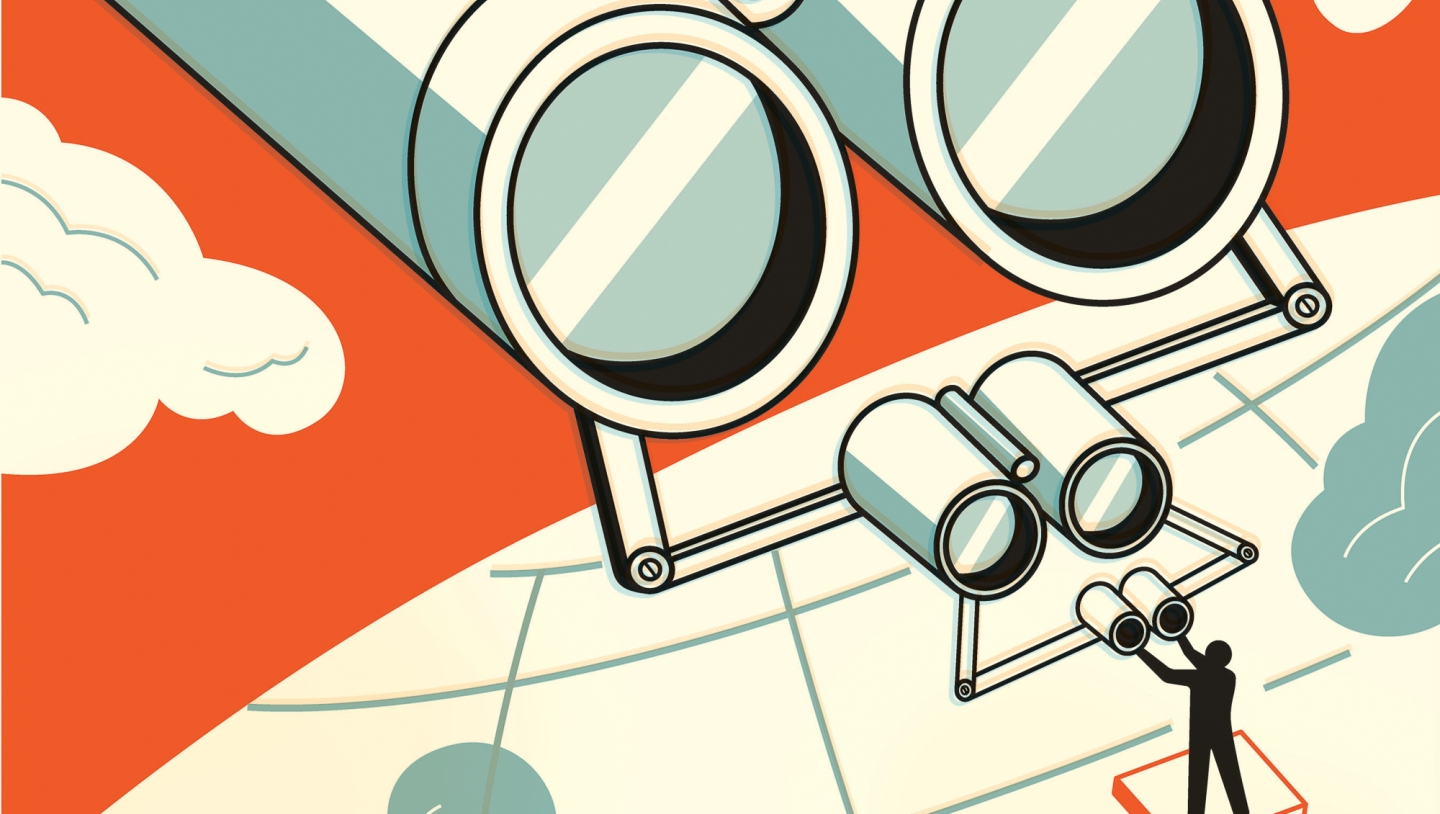BEWARE THE BOTS
Adina Roskies, Philosophy
Cognitive science is undergoing a renaissance, according to Roskies, thanks to developments in deep learning and machine learning. Before long, increasingly lifelike robots will be babysitters, companions, security officers, realtors, even sex partners.
These autonomous, intelligent, mobile systems will raise novel ethical and legal challenges. “How do we assess responsibility in cases where things go wrong?” asks Roskies, chair of the College’s cognitive science program. “If these things are autonomous and intelligent, what place can they have in our world? Some of these issues, which either seemed less pressing or too science fiction-y in the past, will face us in dramatic ways.”
Consider robot caregivers that aid the elderly or disabled. “If we have systems that are empathic and play roles humans once filled for other humans, at what point do we wonder if they should have the rights we have?” she asks. “It’s a big ‘if’ whether these systems will become conscious or autonomous. But if it does happen, it’s something morally we should be very aware of.”
Could a robot be required to testify in court?
For example, could a robot be required to testify in court? If so, could it be made to testify against itself? If a bot creates a work of art, does the bot own it? If it is smart enough, should the bot be held responsible if it fails to realize it’s being fed false data? If a human mistreats a bot and hurts it, is that a crime? Can a bot marry?
Given the human race’s inability to treat its own members fairly, Roskies believes the odds are slim we will successfully navigate the introduction of robots into society. “If the best philosophical analyses suggest these creatures should have rights, I don’t think the world is going to see it that way. They will become second-class citizens.”
When robots start taking jobs from humans, she foresees dire consequences. “There’ll likely be a dramatic, quick restructuring of society that displaces millions of people. I don’t think it’s crazy to think it will lead to unrest and violence. Whether America can remain true to its core values through that sort of thing is a real question.”
A WIDENING OF GENDER AND RACE
Janice McCabe, Sociology
Traditional male-female norms might become a thing of the past. Transgender bathroom laws are only the beginning. Pronouns such as “ze” and “e” are being adopted at Wesleyan and Harvard. The Common Application students submit to colleges offers a “Sex Assigned at Birth” gender identity option. Vermont, Oregon and California have a third gender option on their driver licenses, and this trend will spread and intensify, according to McCabe.

Especially in sports. “Perhaps in the future, rule makers at the Olympics will measure competitors’ testosterone levels to create new categories of athletes based on those tests,” she says. “This might be better than singling out people who look suspicious or because they don’t fit society’s notions about what it means to be a woman.”
Sociologists are also increasingly focused on intersectionality, the belief that gender, sexuality and other characteristics overlap, and that to understand people one has to take into account those interwoven complexities. “There is a growing interest in blurring boundaries, especially as they relate to gender—including queer or transgender or people who don’t identify as binary—and that applies to race, as well,” says McCabe.
For example, Nkechi Amare Diallo, a former civil rights activist known as Rachel Dolezal, captured America’s attention in 2015 when she was exposed as a white woman passing herself off as black. Diallo now identifies herself as “trans-black.” Such an event raises the question of whether racial identity is fixed at birth or is something a person can change, according to McCabe.
“If we don’t know what race or gender people are, it makes comparisons with historical data difficult.”
Racial categories have already evolved due to changes in census categories. “Our notion of race is already different from what it was,” she says. “This raises the question of whether a racial category can change during someone’s lifetime and what the implications of that might be. That would raise problems for sociologists who study broad patterns. If we don’t know what race or gender people are, it makes comparisons with historical data difficult and makes it harder to track things such as income inequality between groups.”
STILL PLENTY TO PONDER
Vaughn Booker ’07, Religion; African and African American Studies
“In the next 10 or 20 years we will still, in a sense, be circulating around a question that has always animated the field—what is religion?” says Booker. “Religion is constantly being born and dying.”
Christianity and Islam will evolve partly because centers of religious identity are in flux around the world. “We have a pope from South America,” says Booker. “He has a frame of reference, perhaps based on his region’s ecological or labor conditions. As Christianity shifts to the global south, you’re going to find religious leaders who speak to those areas’ pressing concerns. The questions of who gets to go to heaven or hell may not have as much primacy as whether people can survive and provide for their families in worsening conditions. Similarly, Muslim migration to Western Europe for geopolitical reasons will affect Islam’s racial identity and practices.”
Global consciousness will rise to a higher level.
Global consciousness will rise to a higher level. “Religious traditions that emphasize human connectedness will continue doing so in theological language to try to morally compel people to confront how the earth is changing,” says Booker. As a consequence, religious leaders will increasingly articulate moral principles that are related to exercising better stewardship of the planet.
Not surprisingly, space tourism and possible permanent Mars and moon colonies will cause people to examine their spiritual beliefs in new ways. “The more people understand what exists beyond Earth the more they’ll think about humanity’s place in the greater cosmos. That doesn’t mean there will be new religions related to such exploration, but people could reflect upon traditions that have established notions of how long humanity has existed, just as the study of evolution once stirred debate among Christians about whether the earth is 6,000 years old.”
THE DEATH OF CREDIBILITY
Hany Farid, Computer Science
“The question is how you assess reality in a post-reality world,” says Farid, one of the world’s foremost experts on digital image forensics. He studies image analysis and human perception and consults for government agencies that need tools to authenticate digital images and videos.
Recent breakthroughs in generative adversarial networks have created the ability to change the words a person says in a video in such a way that looks and sounds authentic. Farid thinks it’s possible a video could be created showing President Trump saying he’s launched an intercontinental ballistic missile at North Korea. It might then go viral, and the consequences could be troubling, to say the least. Farid and others are developing techniques to unmask fake images and videos, but he says the process is a “never-ending arms race” against those who would use the technology maliciously.

Predictive analytics also worries Farid. This statistical technique crunches “big data” (colossal amounts of information) to predict behavior in fields ranging from credit-risk assessment and direct marketing to law enforcement, fraud prevention and insurance underwriting.
“We’ve been going on the assumption that machine learning, which relies on extracting patterns from large data sets, is better than humans at making decisions. It’s not unreasonable,” he says. “We have this sense that we should take decisions out of the hands of people such as judges because judges have biases, explicit and implicit.” But Farid knows there’s no such thing as unbiased data because numbers can reflect social biases.
This new mode of number crunching will not be problem-free. “We’re not thinking carefully enough about how it works, where it’s going to be misused and where mistakes will be,” he says. “It’s making life-altering decisions in people’s lives—not just in criminal justice but with regard to loans for small businesses, for mortgages, university placement and employment.” The worst-case scenario? “Turning over decision making to this technology and allowing biases against women, minorities and others to get introduced while no one is looking at the system,” says Farid.
PRESS “COPY” FOR KIDNEYS
Joseph Rosen, Medicine and Engineering
In a generation, the hospital will be a copy shop, home to biological Xerox machines. To conquer diabetes and kidney and liver failure, doctors in 2040 will use regenerative medicine, robotics and virtual reality to tailor-make new organs, which they’ll build from patients’ cells.
“Presently we treat these issues, which are essentially the failure of certain organs and affect hundreds of millions of people, with transplantation. But this only helps a small percentage of people, because there’s an organ shortage. We also treat these ailments with medicines such as insulin, which are good for big pharma but expensive,” Rosen says.
“Doctors will harvest fat cells and convert them to mesoderm, endoderm and ectoderm cells, the basic elements for a kidney,” says Rosen. Those cells will grow around an artificial framework. Surgical robots will insert the kidney into a patient as an outpatient procedure. To trick the body’s immune system into ignoring the synthetic scaffold, doctors will “cover it with compounds that give it the cloak of invisibility, so the body doesn’t see it,” he adds. What’s more, virtual reality will help design the organ to match a host’s exact needs.
“Doctors will transmit genomes into people digitally.”
Fast forward to 2070: Synthetic biology will allow lightning-fast creation of new flu vaccines, enabling doctors to stay ahead of the viruses’ life-threatening annual genetic shifts. Today it takes six to 12 months to grow vaccines in eggs, but biological engineering will condense that process to as few as 10 days, which is “remarkable,” according to Rosen.
“But even at 10 days, the cow’s already out of the barn,” he says. “Because if the flu hits America and travels across the country at the rate of transportation, I still have to distribute the vaccine and inoculate everyone ahead of it, which we don’t have the resources for.”
Instead, he predicts scientists will build a new organ for people that will be implanted and able to manufacture an immune response to a particular genome before the flu reaches them. “In 50 years when there’s an announcement of a new flu strain, doctors will transmit genomes into people digitally, and they will then produce responses to the flu in their own bodies,” says Rosen.
FOREVER MATERIALS
Jane Lipson, Chemistry
Chemists will continue to grow, assemble and better understand the behavior of molecules. “We’re moving to a future in which synthetic chemists construct molecules more and more selectively,” says Lipson. “We’ll see increasingly blurred lines between molecules that nature makes and ones chemists make.”
The potential applications are enormous. “In the space program, for example, materials that can be nicked or abraded in some way and still be robust or repair themselves could be useful for space suits, transportation materials or in exploratory vehicles.”
“We’ll see blurred lines between molecules that nature makes and ones chemists make.”
Imagine self-healing “glass” that repairs itself (handy on a spaceship with a cracked window), car paint that fixes its own scratches, tires whose leaks reseal, water repellent that won’t wash off and batteries that re-energize. Even more amazing, these “forever materials” will possess the ability to renew themselves dozens of times.
But Lipson warns that a big hurdle lies ahead—sharing information. “Because of our ability to manipulate molecules, we have huge amounts of data we need to share and standardize,” she says. Ideally the database would store information about chemicals such as density, melting temperature and heat capacity. “It would allow scientists to connect the chemical nature of a material and its physical properties, and thus enable the design of advanced, new materials.”
A HOARDING ELITE?
Andrew Levin, Economics
Advances in technology are raising two key economic questions, according to Levin: How will humans manage robots and how will humans stay employed? “Major issues will be who owns the robots and who owns the technology associated with artificial intelligence,” says Levin. “If a monopoly of two or three huge firms owns that technology and controls it, that has huge implications for society and politics and everything we do.”
He worries society is heading toward a Blade Runner-type world in which a select few hoard wealth and resources. “In that movie, elites live in high rises and extreme luxury, while the homeless scrounge in garbage,” he says. “There are already cities that look like that, and it would be an unfortunate world if that’s where all civilization ends up.”

To combat this, the federal government might use antitrust laws to break up high-flying tech companies as it did in the 1910s and 1980s, when it forced Standard Oil and the Bell System, once the world’s largest petrochemical and communications companies, to divest themselves of assets. The result would be more innovation, economic growth and prosperity.
Nonetheless, Levin wonders how humans will stay employed when workforce robots are everywhere. Finland, Kenya and California are already experimenting with universal basic income, in which all citizens receive a stipend, theoretically making jobs a thing of the past. But he believes people will find meaningful work, noting that this would not be the first time in history people have had to adjust to sudden technology-driven job dislocations.
“Every human being is unique and valuable,” says Levin. “New things that weren’t possible will start to open up. We need to move to an educational system that encourages people to think creatively and define what makes them special. We need a way to design the workforce that involves a lot of art and aesthetics, so people can work together and do things they enjoy that can’t be replaced by a robot.”
BEYOND NUMBERS
Feng Fu, Mathematics
“Pure mathematics doesn’t change,” says Fu. “Applied math, on the other hand, is always changing because the landscape of real-world problems changes, and applied math adapts to it—and becomes more interdisciplinary.”
He foresees vast potential for applied math during the next 10 to 20 years. “We want to conquer many difficulties in health sciences, such as cancer, which has replaced infectious disease as a leading cause of mortality,” he says. Cancer researchers have high hopes for breakthroughs in immunotherapy. This involves adoptive cell transfers in which immunity cells from a patient are collected, selected for anti-tumor activities, grown and put back in the patient.
Mathematics will tackle issues related to overpopulation.
“But the cost of these personalized therapies is astronomical, and clinical trials are small,” says Fu. To make them more affordable, he predicts researchers will move from “wet” experiments to “dry” ones using mathematical models that simulate possible solutions. “Then you can test them in people after the therapy’s been informed by modeling,” he says. While acknowledging some clinicians are skeptical about applied mathematics working in this context, he notes that “HIV researchers have been using mathematical models to determine which drugs will work and what dosage to prescribe. I’m hopeful that in 10 years this kind of application will be more ubiquitous.”
Mathematics will also tackle issues related to overpopulation. He quotes philosopher and ecologist Garrett Hardin, who said, “The population problem has no technical solution; it requires a fundamental extension in morality.” An optimist, Fu believes “we can model human cooperation on a global scale. In 20 years there might be an academic discipline called ‘mathematical humanity.’ It’ll be very helpful gaining deeper insights into mechanisms for promoting altruism and cooperation. Mathematical models will synergistically interact with humanities and the social sciences to change the world for the better.”
Tiffanie Wen wrote about undergrad advisors in the January/February 2018 issue of DAM.
This article originally appeared in print with the headline, “What’s Next.”




